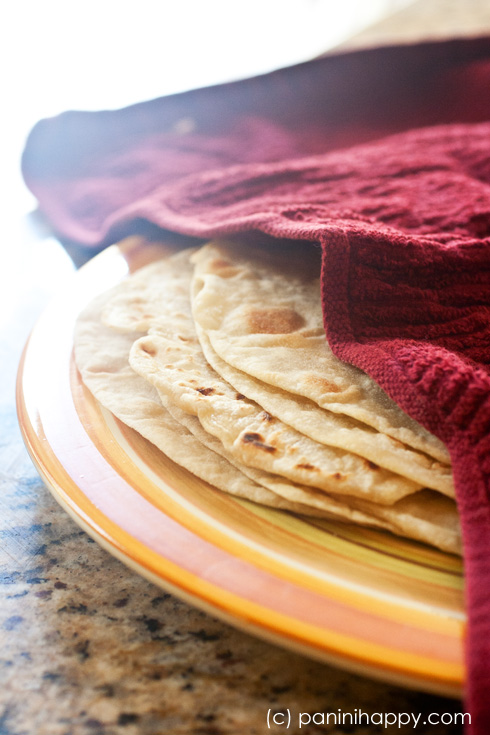What a month it has been! Between teaching, launching Plate & Pencil, spending the holidays in Boston, getting the flu during the holidays in Boston, I've been a little behind on blogging. Little by little, I'm getting back into the swing of things though. Today I decided to update this simple but delicious Vietnamese beef stir-fry I first did almost two years ago. Its ingredients are minimal but the flavor is outstanding.
I was at my favorite butcher shop last week to buy some flank steak for dinner when I noticed some very nice-looking flat iron steaks in the display case. The last time I worked with flat iron steak was maybe in culinary school, but because it was about $4 a pound cheaper than the flank steak, I was curious how it would turn out in a stir-fry.
"I can just tenderize it here for you and you're good to go," said the butcher on duty, who then proceeded to pound the steak with a meat mallet before I could second-guess my choice.
Flat iron steak, also called top blade steak, is usually found only in specialty butcher shops because of its scarcity. It seems to be a relatively new cut of beef, developed by researchers from the University of Florida and University of Nebraska in the early 2000s when they were trying to find a way to use the meat from the top shoulder of the cow, which before had just gone to waste. With a good amount of marbling and deep flavor, flat iron steak is usually grilled when you find it in restaurants. But as I learned last week, it also takes to the wok like a charm.
I made a Vietnamese beef and green bean stir-fry, marinating it in my usual soy sauce/rice wine/cornstarch mixture. My friends Barb and Max came over for dinner, and I'm pretty certain they weren't just being polite when they said they really, really liked the dish. I think we all kept trying to scoop up more sauce with our forks even when the beef and green beans were all scarfed down. Oh yes, speaking of the sauce, it's a simple blend of fish sauce, soy sauce, and freshly ground black pepper. Yet the remarkable, slightly earthy flavor makes it taste like it's composed of 10 ingredients instead of just 3.
So try this out and let me know what you think, regardless of whether you can find flat iron steak. Flank steak and skirt steak work just as well and don't need to be tenderized before marinating. Just remember to slice the beef against the grain, or else you'll end up with a very tough texture. Tossing the beef in the freezer for 20 minutes beforehand will make the slicing much easier.
If you have any leftover sauce, you can save it for another quick meal the next day - it's fantastic as a seasoning for fried rice, with nothing else needed except maybe some scallions and egg.
_________________________________________
Vietnamese Beef and Green Bean Stir-fry
Serves 4 as part of a multi-course meal
- 1 pound flank or flatiron steak (the latter tenderized), cut into 1/4-inch thick slices
- 1 tablespoon soy sauce
- 1 tablespoon Chinese rice wine or dry sherry
- 2 teaspoons cornstarch
- 1 tablespoon peanut or vegetable oil
- 2 cloves garlic, minced
- 1/2 pound green beans, trimmed
- 1/2 cup water
- 1 1/2 tablespoons fish sauce
- 1/4 teaspoon freshly ground black pepper
**Special equipment - wok or large skillet with a lid
- Marinate the beef: In a medium bowl, stir together the cornstarch, 1/2 tablespoon of the soy sauce, and the rice wine until the cornstarch is dissolved. Add the beef and toss to coat. Let stand for 10 minutes.
- Heat a wok or large skillet over high heat until a bead of water sizzles and evaporates on contact. Add the oil and swirl to coat the bottom. Add the beef and spread it out in a single layer. Allow it to sear untouched for 1 minute, then stir-fry for another 1 to 2 minutes until the pink is mostly gone. Transfer to a plate and set aside.
- In the same wok, add the garlic and stir-fry very briefly (about 20 seconds), just until aromatic. Add the green beans and stir-fry for another 1 minute. Add the water and immediately cover with a lid. Allow the green beans to steam for 3 to 4 minutes, or until they are crisp-tender and the water has evaporated.
- Return the beef to the pan and add the fish sauce, the remaining 1/2 tablespoon of soy sauce, and the black pepper. Stir so that everything is well coated, then turn off the heat. Transfer to a plate and serve.
via:http://appetiteforchina.com/recipes/vietnamese-beef-with-green-bean-stir-fry?utm_source=feedburner&utm_medium=feed&utm_campaign=Feed%3A+appetiteforchina+%28Appetite+for+China%29






